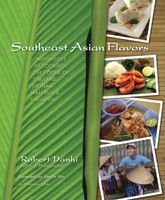Advertisement
Making a Spice Paste by Machine
By Robert Danhi
Published 2008
Making a paste in a blender (preferred) or a miniature food processor can also yield an acceptable paste. The order of adding the ingredients is completely different. First, the wettest ingredients go in (shallots and garlic) and any oil that the paste may be fried in. The oil addition is more common in the spice pastes (rempah) of Malaysia and Singapore. Thai curry pastes do not contain oil. Purée these wet ingredients, only adding water if needed. It is best to make large batches (double those in this book) as it give the blender something to work with. Next the drier ingredients go in, items like rehydrated chilies, lemongrass, galangal, and such. Spices like peppercorns, cumin, and coriander must be roasted and ground separately before adding to the blender.


